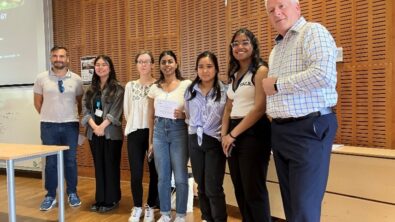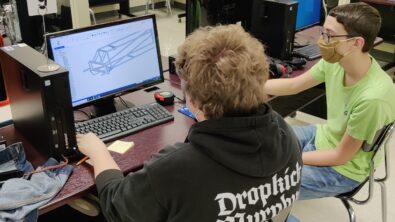Developing tomorrow’s engineers: Siemens partners with ReDI Duisburg to teach students about CAD and 3D printing
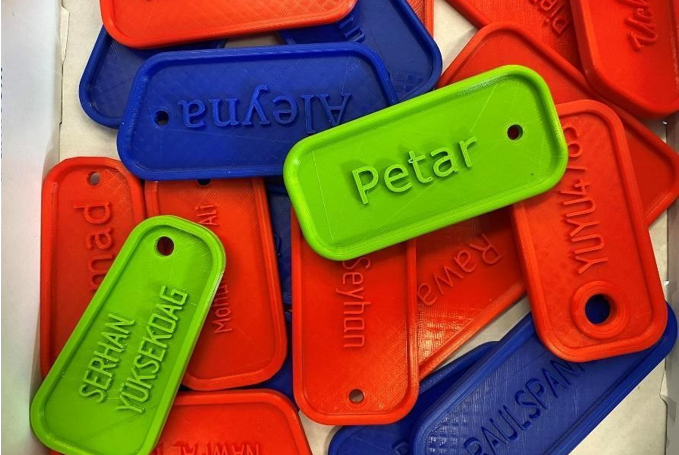
Shaping the future
During the pandemic, it became even more clear that the importance of digitalization can no longer be neglected. On the contrary, the necessity to implement a new digital skill set needs to start even earlier – ideally at school. To teach our children the insights they need for their future job, to close the gaps in technical knowledge and to bring real best practice into the daily school life of our kids, a few enthusiasts at Siemens founded #siemensmovesschools in 2020.
Their goal is to broaden the view of pupils, teachers, and parents by offering help, knowledge and new insights. And also of sharing the benefits of connecting to other visionary, like-minded partners. One of these inspiring partners is the ReDI School of Digital Integration, a non-profit tech school for locals and newcomers without access to digital education. ReDI offers students high-quality coding and basic computer courses in combination with a unique career program as well as the chance to collaborate with the start-up and digital industry since 2016. By doing all that, they are trying to make a difference in education for refugees, immigrants, and other minorities, having offices in different German towns as well as in Denmark.
“Our aim is to provide our students with the best education and a strong network of tech leaders, students, and alumni to help create new opportunities for all. So, they can enter the German job market as fully enabled and highly skilled talents”, says Leevke Denker, Program Manager Kids & Youth at ReDI School.
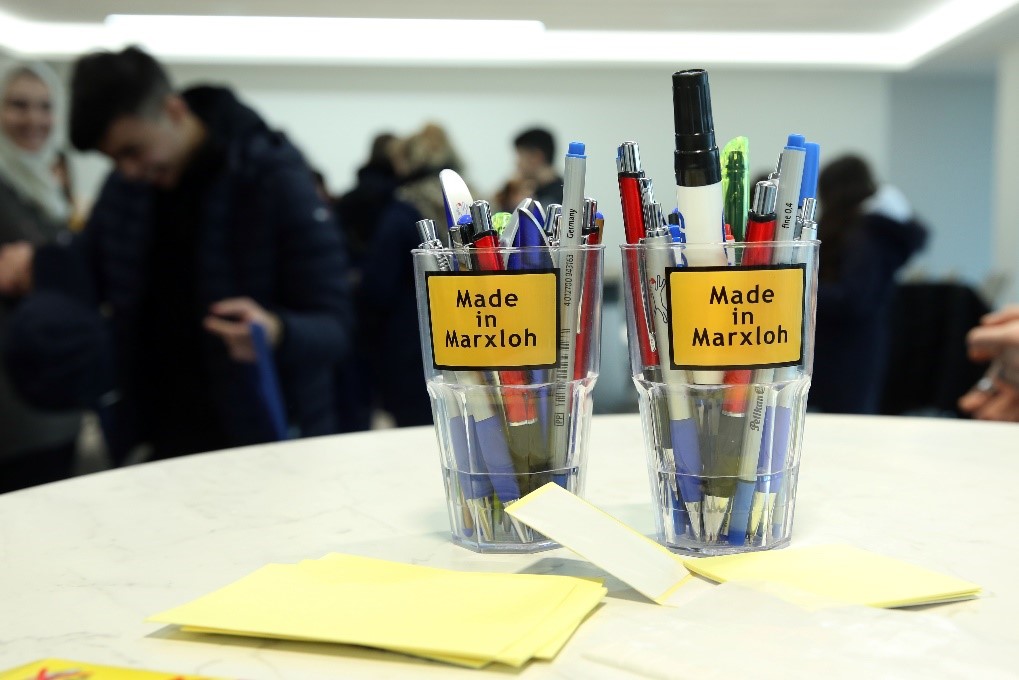
Besides the professional courses for adults, ReDI also runs tech lessons at different schools in Duisburg-Marxloh. In the ReDI Kids and Youth Program, students between the age of 6 and 16 with social disadvantages learn future-relevant digital skills like coding, programming or 3D design. Marxloh, as one of the social hotspots, is characterized by a high proportion of migrants and low socioeconomic status. Such an environment makes it difficult for children and young people to grow personally and to learn in many ways. To integrate marginalized children and youth socially and culturally and prepare them for the future, the ReDI program in Marxloh aims to develop their digital literacy and career skills, by working closely with partners such as Siemens.
“We know that some of these kids didn’t have an ideal start and therefore need extra support. That’s why we wanted to do something to inspire these kids and to promote integration”, summarizes Susann Kunz, responsible for Academic Initiatives around Solid Edge at Siemens Digital Industries Software, the starting point of the collaboration with ReDI. “Following the simple motto of #siemensmovesschools Just Do It!, we started with a simple name tag workshop, where kids were instructed how to use the Siemens CAD software Solid Edge to design their own keychain.”
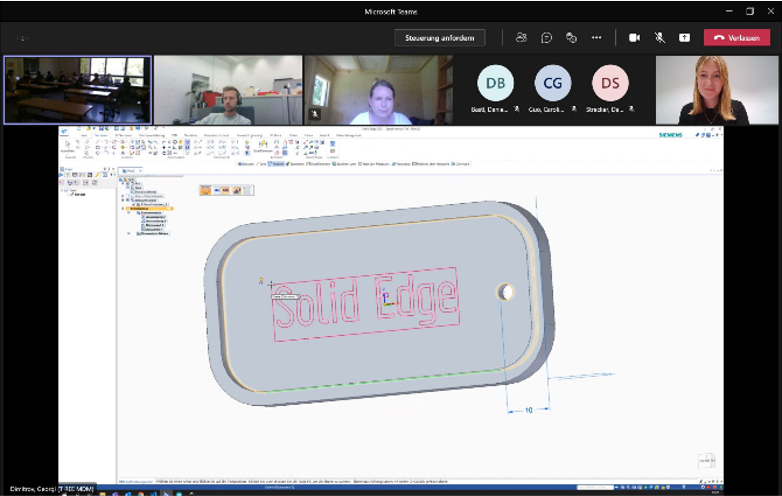
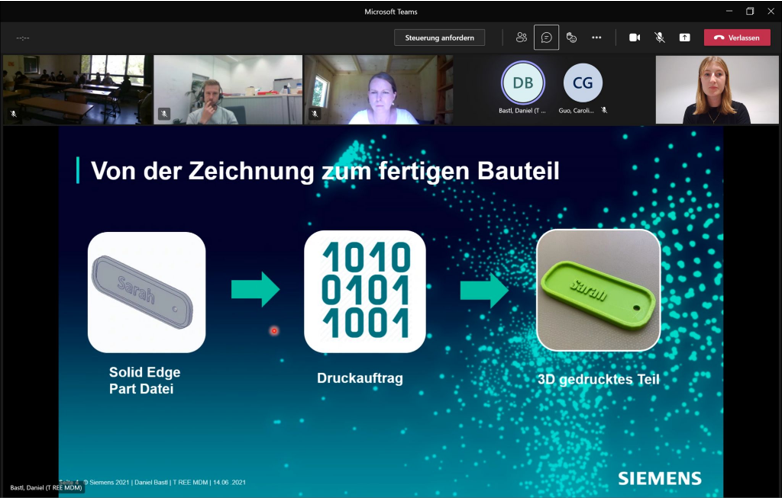
Promoting self-confidence by learning something new
The first workshop took place on June 6, together with students of the Herbert-Grillo-Gesamtschule in Duisburg. The hybrid two-hour session was run via Microsoft Teams by the Siemens Solid Edge team and supported by two ReDI mentors and the class teacher on site.
For ReDI teacher Ben Jaskulski, it was quite surprising how different the kids were managing the given task. Some students were enthusiastic and could follow the instructions very well, testing many Solid Edge functions that weren’t even shown. Others had to get used to the unknown software first. Most of the students never worked with a computer mouse before and had to learn how to use various tools during a ReDI preparation lesson.
“The kids had great fun creating their own designs”, reports Ben. “Furthermore, I found it quite helpful to have the experts from Siemens and Solid Edge attend to help me whenever one of the students struggled with the program”. For ReDi teacher Evrim Yilmaz, who has been teaching the students from the beginning, shared that it was amazing to see her students’ progress: “I am excited about the progress the students have made over the school year. Some have discovered a talent in themselves that they didn’t realize they had before. It’s great to see how they are now able to work in Solid Edge.”
Also, for the 24 seventh graders it was a quite new experience. One of the students, 13, remembers: “I had never used CAD software before and knew Siemens only by name. So, I was quite surprised that I was able to create my own name tag with a professional engineering software that is usually used by big manufacturers like Dyson or Kässbohrer in just one hour.”
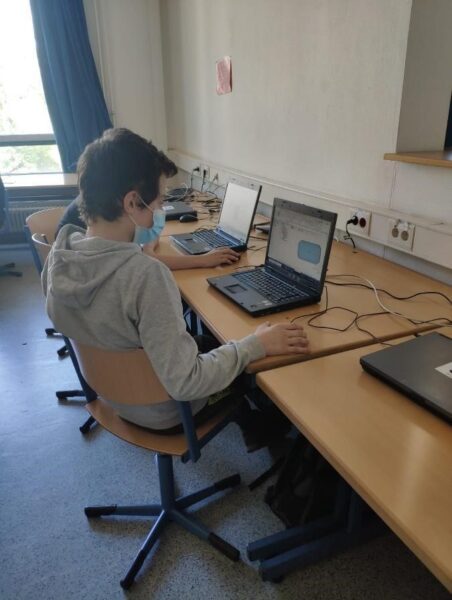
For all students it was interesting to practice not only CAD and design, but also to learn from the Siemens Maker Space. They learned from the working students’ things like, ‘what is a digital twin?’ and ‘why is it so important for companies today to invest in digital product development?’. Daniel Strecker, Solid Edge expert at Siemens and technical instructor during the workshop, thinks it is important to introduce kids in school to some fundamental and yet life changing technologies, like additive manufacturing: “By offering such a workshop, we can visualize the connection between CAD and 3D printing. First you need a digital concept for your product and then if everything fits, it can be manufactured, for instance with additive manufacturing methods like 3D printing.”
To Sebastian Dick-Tecklenburg, class teacher, “Even more important than seeing the students learn how to use 3D CAD software, is that they understand the connection between learning something in school and being able to use that knowledge in their work later. Especially in the field of technology, the connection between what is learned in the classroom and the practical usage of this knowledge outside of the classroom often gets lost. Furthermore, it is amazing to see students discover their talent using technology that they did not know they had.”
The students also learned that the design influences the shape of the model directly. The nozzle of the 3D printer that was used was bigger than 0.2 mm, so the feature size and accuracy were limited. That’s why the individual details and letters had to have a minimum thickness to be visualized completely after printing.
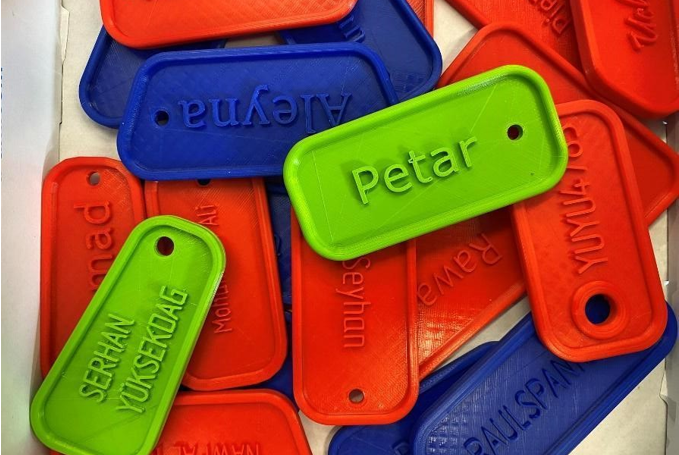
A successful partnership to be continued
After the students had successfully created their own keychain in Solid Edge, all the individual parts were converted into STL files, so that 3D printers at the Siemens Maker Space in Munich could process and print the files.
The printed key chains were handed over to the students after the summer holidays. The most beautiful name tag was selected by a jury of Siemens employees and rewarded with a prize.

Summing up her experience, Leevke says: “For us, it was great to see how passionate our kids got when they designed their name tag. Most important for us was not to leave anyone behind, so that in the end everyone could hold his own printed model in their hands. Besides giving everyone a positive feeling, we will also encourage very talented students to intensify their knowledge in 3D CAD and Solid Edge.”
Both Siemens and ReDI School are very happy with the collaboration and are already thinking about implementing the topics CAD and 3D printing on a longer term into the curriculum of the ReDI program in the secondary schools. Leevke Denker: “The workshop was a great experience for all participants. Giving the kids the opportunity to quickly learn how to work with an unknown tool that is used in professional life and even create their own product, gave all of them a big boost in their self-confidence. Ending the ReDI program with such a project was a big success. I am excited for further projects together with the Siemens team.”

If you’re interested in creating your own name tag, follow the instructions in this guided Solid Edge tutorial to get started. You can download a free Solid Edge student license here.
If you want to know more about #SiemensMovesSchools and other offers, check out our Academic initiatives or send an email to siemensbewegtschule.de@siemens.com to learn more.
For more information on ReDI School of Digital Integration, visit redi-school.org.
